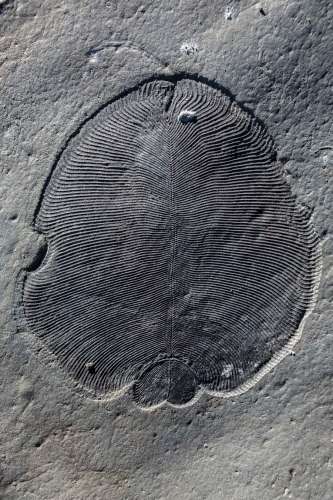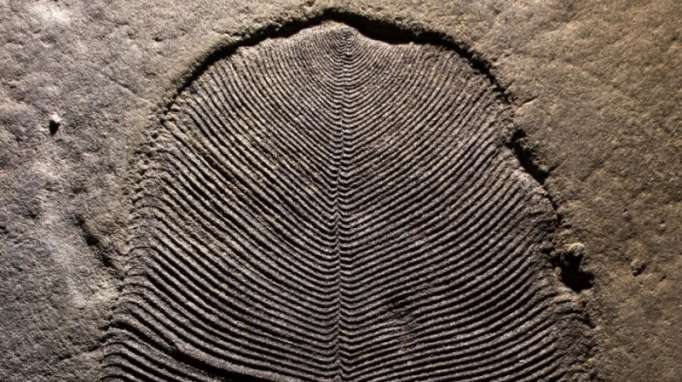The true identity of the ‘Dickinsonia’ fossils has been the center of a heated debate since it was first described in 1947. The 558 million-year-old animal is unlike any we have on Earth today – it’s up to 1.4 meters (4.6ft) in length, is flat, oval in shape, and ribbed.
Over the years, scientists have put forward arguments that the creature is a form of jellyfish, bacteria, worm, mushroom, coral, algae – and the list goes on. But the recent discovery of cholesterol in a Dickinsonia fossil determined that the creature is most definitely an animal.
READ MORE: ‘Robotic skins’ brings inanimate objects to life and gives them purpose (VIDEO)
"The fossil fat molecules that we’ve found prove that animals were large and abundant 558 million years ago, millions of years earlier than previously thought,” said paleobiogeochemist Jochen Brock from the Australian National University (ANU).
Most of the Dickinsonia fossils were found in the Ediacara Hills in Australia, and have been subjected to tremendous heat, pressure and weathering, leaving no organic matter behind. However, some Dickinsonia fossils found in Russia are better preserved and retained organic matter.

The oldest animal on Earth © ANU
The discovery of Dickinsonia fossil in ancient rocks in Russia was the breakthrough scientists needed to close the case once and for all. Reaching them, however, was no easy feat.
“I took a helicopter to reach this very remote part of the world – home to bears and mosquitoes – where I could find Dickinsonia fossils with organic matter still intact,” said biogeochemist Ilya Bobrovskiy of the ANU.
“These fossils were located in the middle of cliffs of the White Sea that are 60 to 100 meters [200-330 feet] high. I had to hang over the edge of a cliff on ropes and dig out huge blocks of sandstone, throw them down, wash the sandstone and repeat this process until I found the fossils I was after.”
Being able to finally study the molecules from the ancient organisms was a “game changer” said Associate Professor Brocks: “When Ilya showed me the results, I just couldn’t believe it,” he said. But I also immediately saw the significance.”
The research team led by ANU, the Russian Academy of Science, the Max Planck Institute for Biogeochemistry and the University of Bremen in Germany has published its findings in the journal Science.
More about: Russia
















































